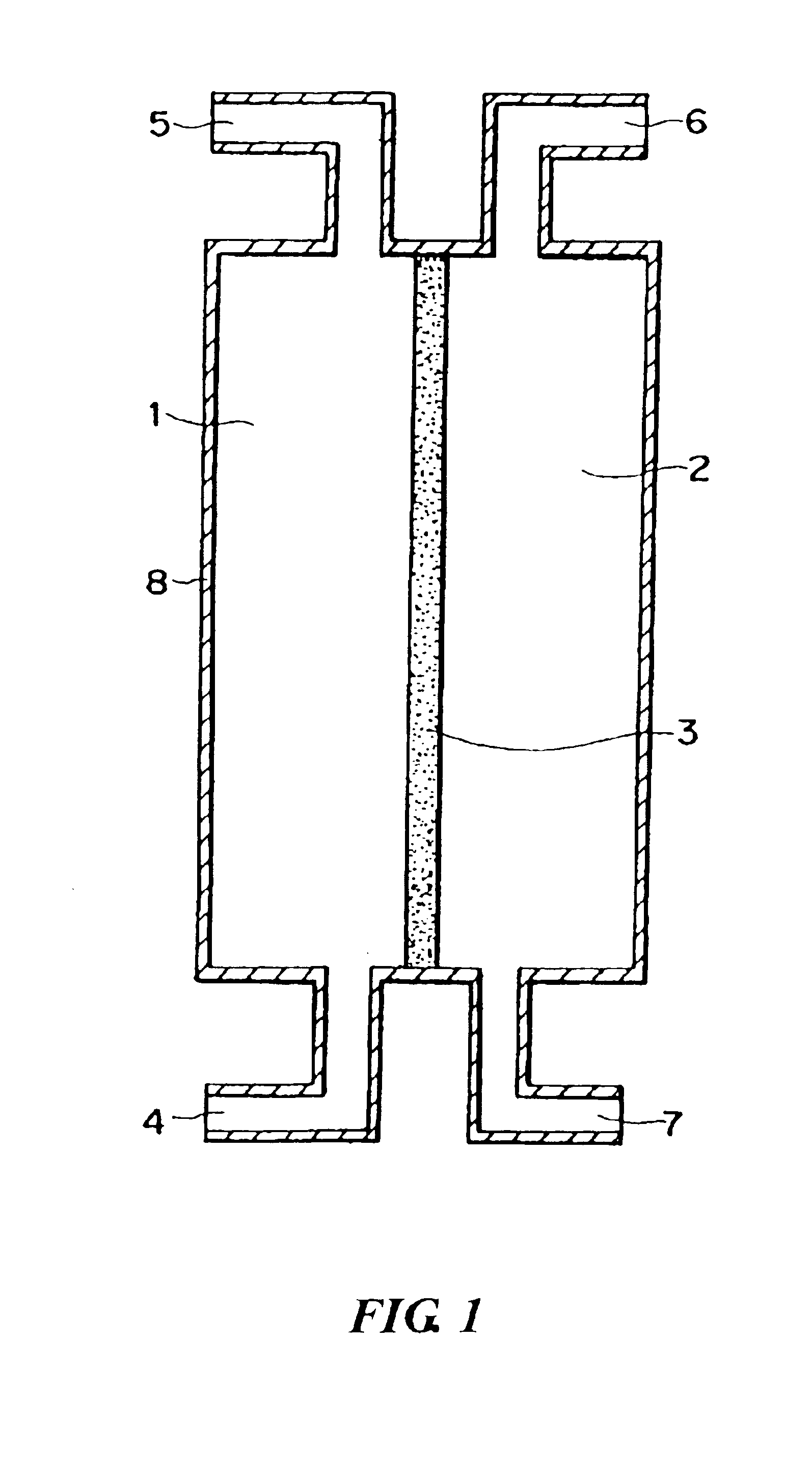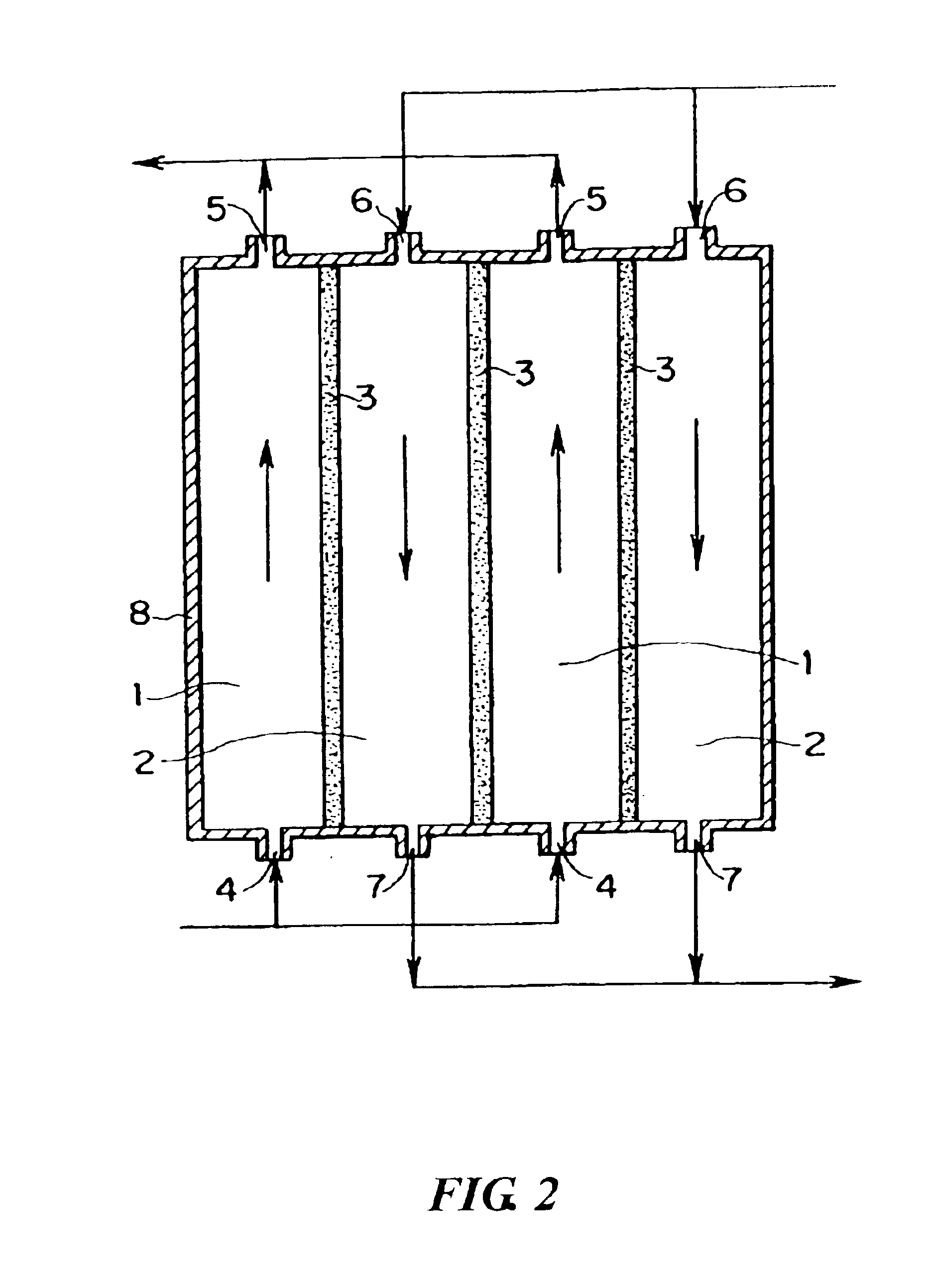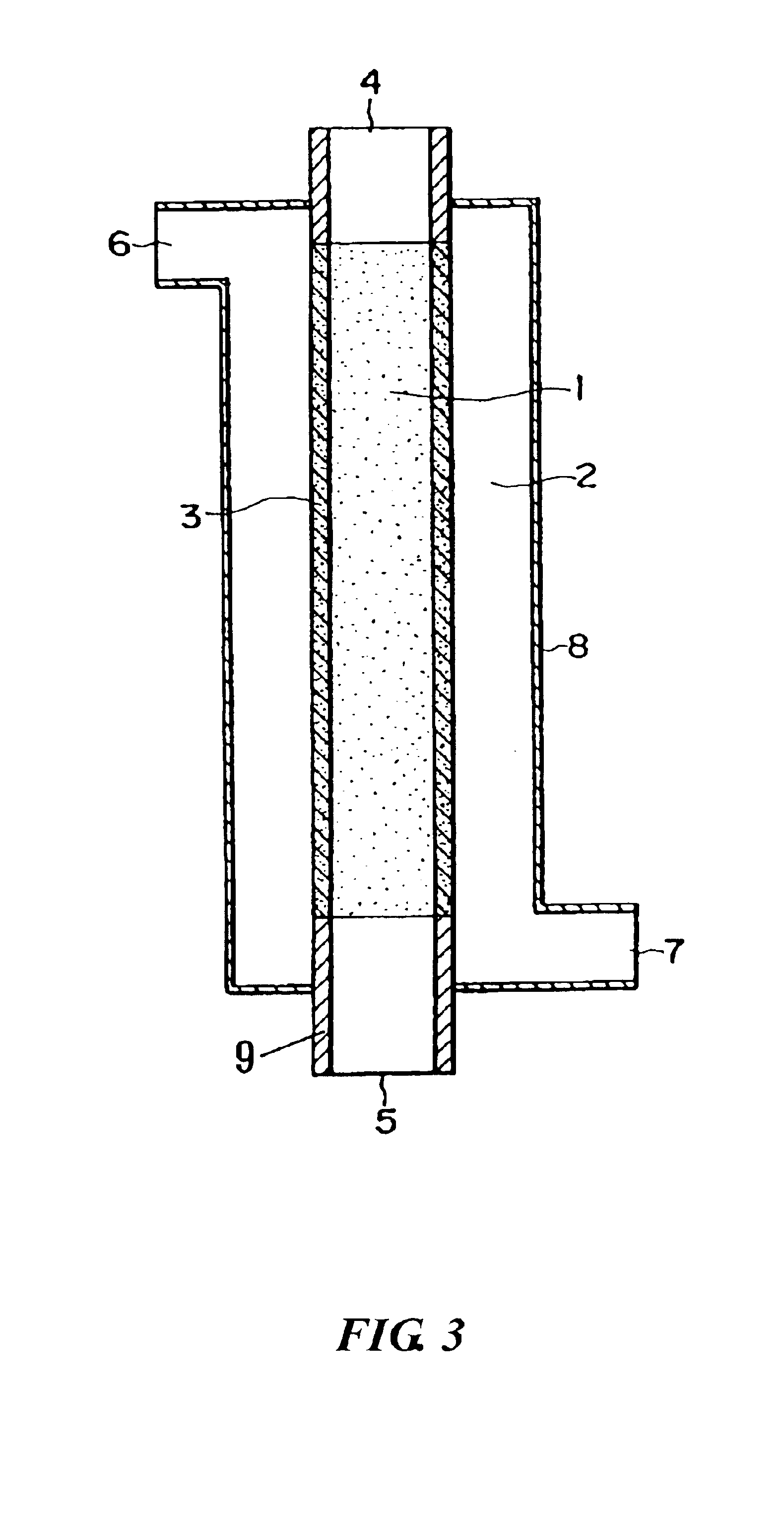Reaction method utilizing diaphram type catalyst and apparatus therefor
a diaphragm type catalyst and catalyst technology, applied in the direction of physical/chemical process catalysts, gas-gas reaction processes, bulk chemical production, etc., can solve the problems of difficult control of reaction, low purity of phenol produced utilizing the latter method, and further oxidation of phenol produced by oxidizing benzene, etc., to achieve high yield and safety
- Summary
- Abstract
- Description
- Claims
- Application Information
AI Technical Summary
Benefits of technology
Problems solved by technology
Method used
Image
Examples
reference example 1
(Production of Diaphragm Type Catalyst)
[0092]A tube used as a porous membrane was produced according to the method described in Example 1 of Japanese Patent No. 1850556. Specifically, a porous α-alumina tube having an external diameter of about 2.0 mm, internal diameter of about 1.6 mm, and pore diameter of 0.2 μm was produced using α-alumina powder with a particle diameter of 0.3 μm. Using a mercury porosimetry, the tube was measured to have a specific area of 6 m2 / g and a porosity of 43 vol %.
[0093]Then, according to the example described in Japanese Patent Application Laid-open No. 11-300182, palladium was carried on the produced porous membrane using a CVD method. The resulting porous membrane carrying palladium has a thickness of the palladium metal layer of 1 μm and a content of the carried palladium metal of 2.0 wt %.
example 1
[0094]Using the porous membrane carrying palladium produced in Reference Example 1 as a diaphragm type catalyst and a reaction apparatus of the same type as shown in FIG. 3, an oxidation reaction of propylene was conducted as follows. Propylene, oxygen, and nitrogen were supplied to a reaction compound residence section 1 respectively at a rate of 0.04 mmol / min, 0.21 mmol / min, and 0.58 mmol / min. Hydrogen and nitrogen were supplied to an activation substance circulation section 2 respectively at a rate of 0.08 mmol / min and 1.58 mmol / min. The reaction was conducted at 200° C. under normal pressure (in gas circulation) to produce a product. The product was collected from an outlet port 5 in FIG. 1.
[0095]The reaction product was analyzed using a gas chromatography to confirm that the oxygen-containing organic compound was acrolein, the conversion rate from propylene was 70 mol %, and the selectivity of acrolein was 38 mol % for the raw material propylene. Therefore, the yield was 27 mol...
example 2
[0096]The reaction as in Example 1 was conducted except that propylene, oxygen, and nitrogen were supplied to the reaction compound residence section 1 of the apparatus of Example 1 respectively at a rate of 0.04 mmol / min, 0.06 mmol / min, and 0.73 mmol / min. The reaction product was analyzed to confirm that the oxygen-containing organic compound was acetone, the conversion rate from propylene was 28 mol %, and the selectivity of acetone was 76 mol % for the raw material propylene. Therefore, the yield was 21 mol %.
PUM
| Property | Measurement | Unit |
|---|---|---|
| pore diameter | aaaaa | aaaaa |
| pore diameter | aaaaa | aaaaa |
| specific surface area | aaaaa | aaaaa |
Abstract
Description
Claims
Application Information
 Login to View More
Login to View More - R&D
- Intellectual Property
- Life Sciences
- Materials
- Tech Scout
- Unparalleled Data Quality
- Higher Quality Content
- 60% Fewer Hallucinations
Browse by: Latest US Patents, China's latest patents, Technical Efficacy Thesaurus, Application Domain, Technology Topic, Popular Technical Reports.
© 2025 PatSnap. All rights reserved.Legal|Privacy policy|Modern Slavery Act Transparency Statement|Sitemap|About US| Contact US: help@patsnap.com



